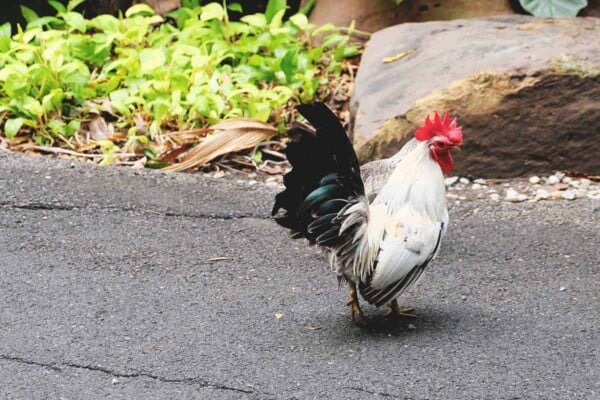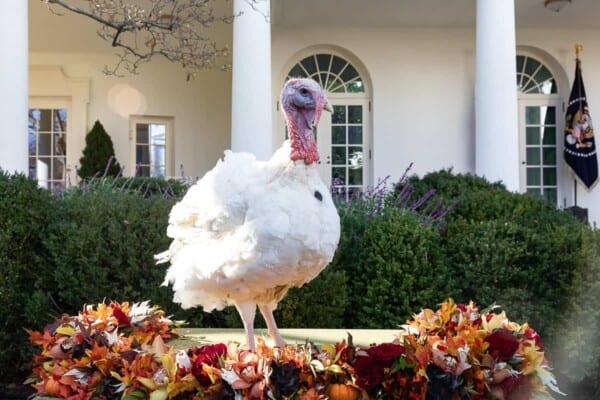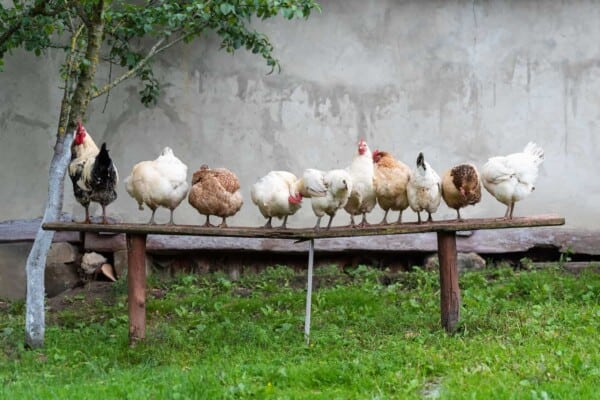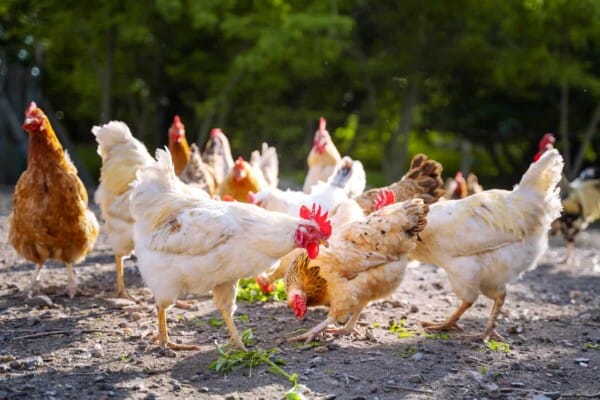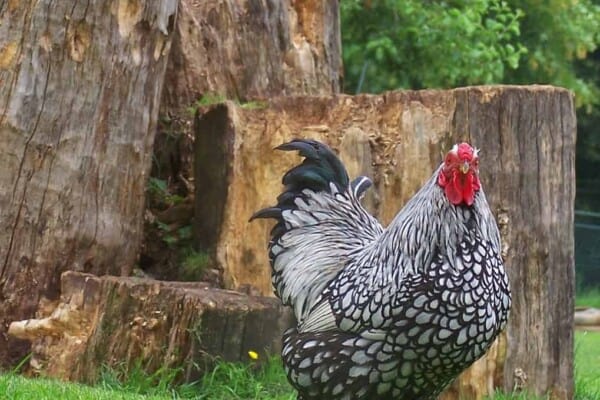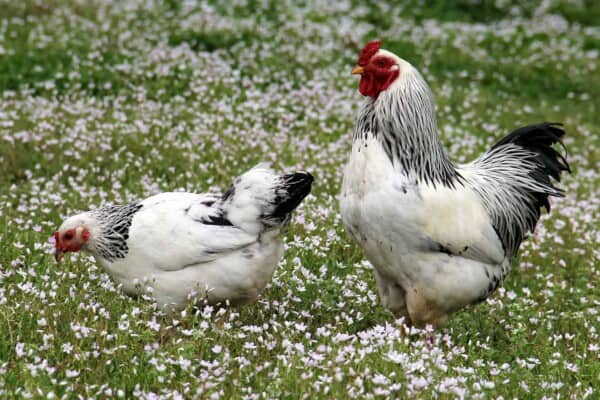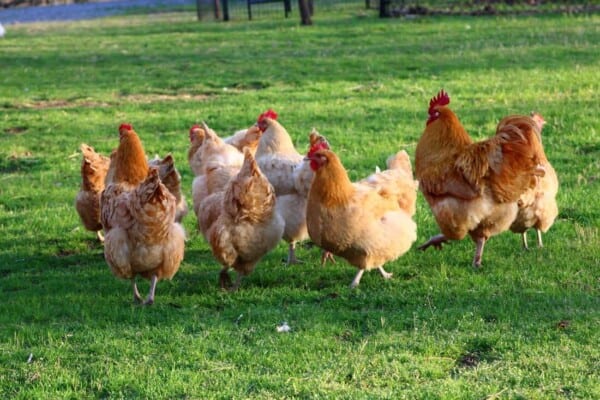They say that the dinosaurs were wiped out around 65 million years ago, but little do these people know that you can actually just turn your head a bit to the side, and follow the horrifying clucks of the giants roaring from their own backyards!
That’s right, today we are talking about these devilish creatures that once ruled over the earth, and while they may not be as massive or deadly as they once were, let’s just say that they can still be just as terrifying as they always were on a dark alleyway.
All jokes aside, who doesn’t love the sight of a cute and fuzzy chicken clucking and wobbling from side to side, as they run towards you to get some free pets. But while they may be extremely cute to look at, they are also extremely profitable if taken care of properly.
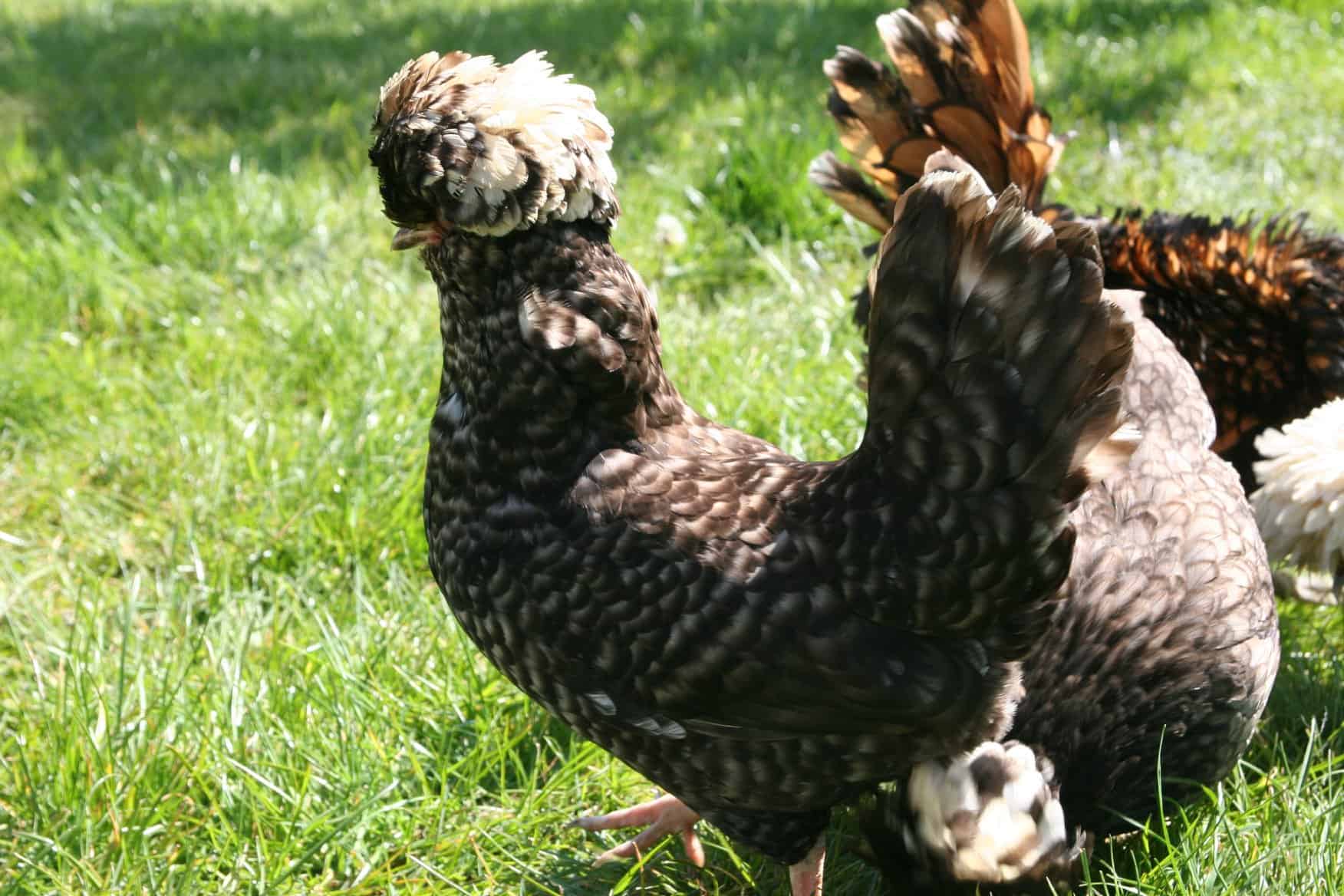
This is why if you’re a new farmer and you’re looking for new avenues to make money, you definitely need to consider getting yourself a handful of chickens to take care of, and reap the benefits from. But which chicken breed should you go for and more specifically, what are the benefits that we talked about before regarding them?
In order to answer these questions (and more) we decided to bring you our very own guides, to direct you towards the best possible feathered acquisition you could make.
So, for today we will be talking about one of our personal favorite chickens out there, the Polish chicken. But before we can actually jump into the juicy parts of our guide, how about we first give you a little introduction to these top hat chickens in all of their glory.
The Humble Beginnings of the Polish Chickens
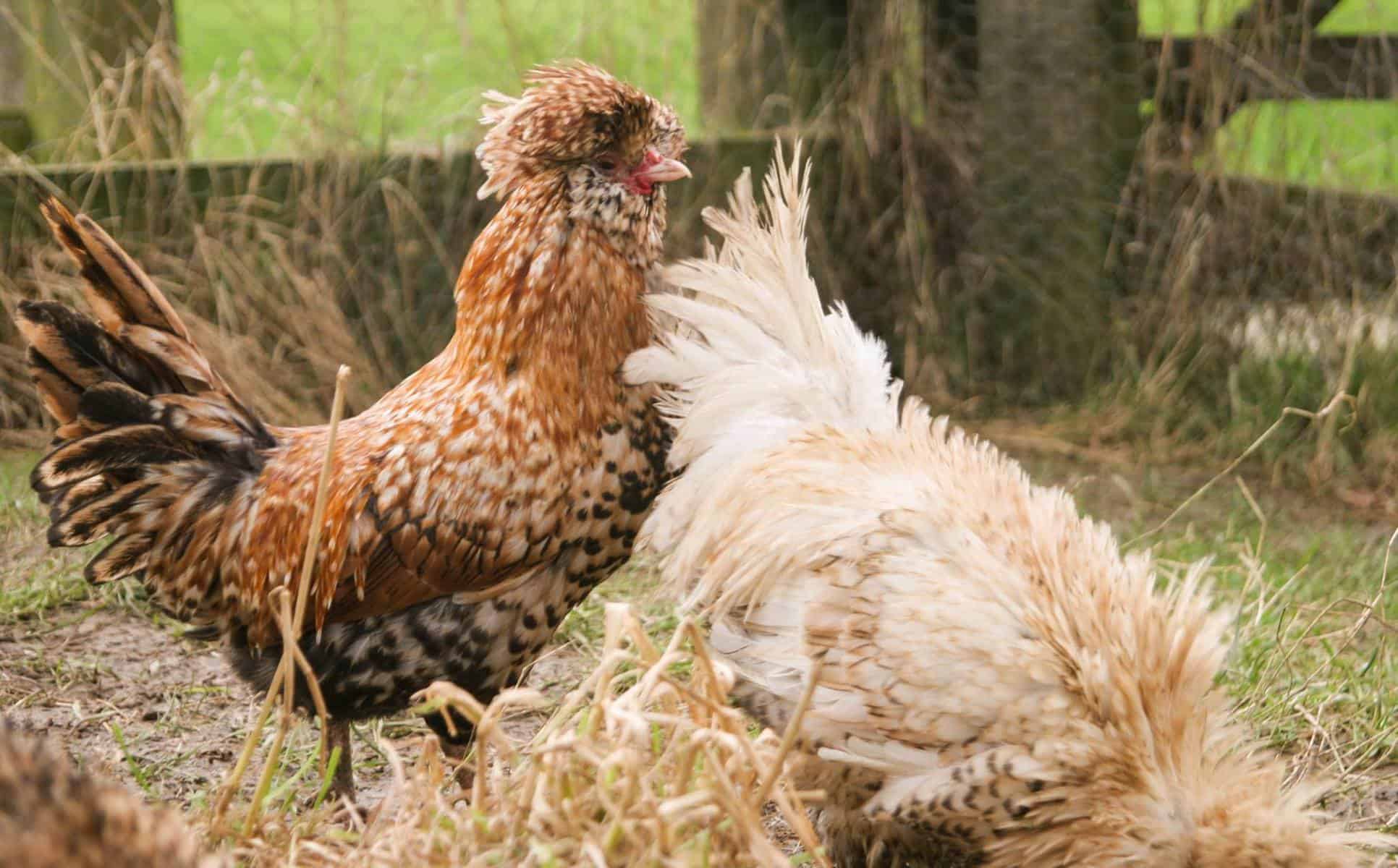
Despite the fact that we are talking about one of the most popular chicken breeds out there, we actually know very little about where the Polish chicken come from, and more specifically which crossbreeds they originated from.
The only thing that we know of for sure is the fact that they originated from Europe, and anything other than that is pretty much just speculations and whatnot.
One of the most popular “origin stories” for the Polish chicken lies in France, as apparently the king of Poland decided that the year 1736 would be the year he ran away, after being dethroned and exiled. He didn’t travel alone though, as with him he actually got a whole feathered party, made up of several Polish native species, including the Polish chickens.
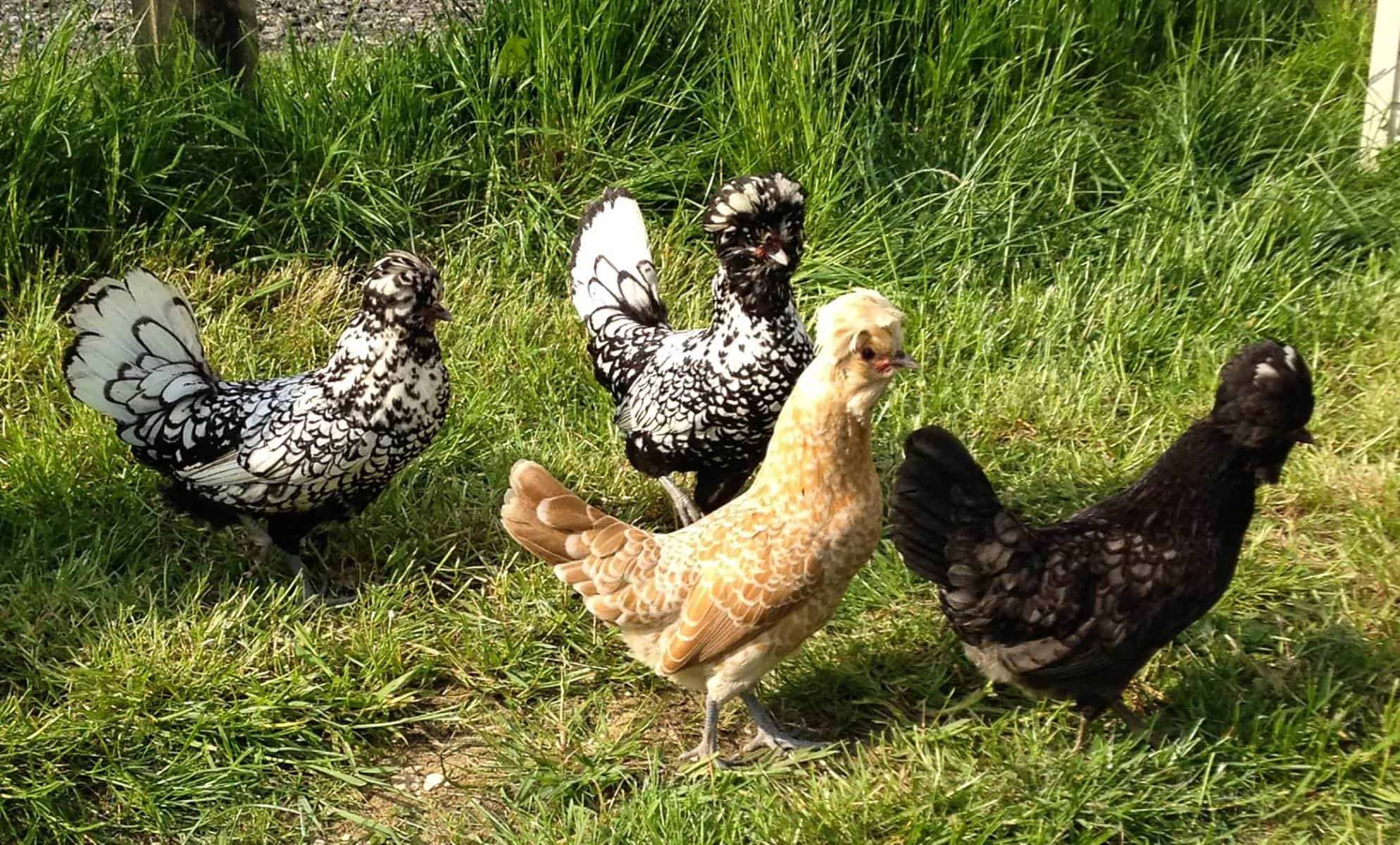
Because of how popular they instantly became in France, they quickly spread all across the country, eventually being shipped off all around the globe, which is where we’re at today.
While none of that has been confirmed yet, it is by far the most popular theory regarding their origins. We know that they were also mentioned in the Netherlands in the past, as an import produce from Spain. That would explain their name as well, considering the fact that “Polish” is derived from the old Dutch word “pol”, which actually means large head.
Even so, we don’t know for a fact where they came from but we do know that it must have been due to their large white egg layer and the fact that they look so unique that they became so popular back then.
Speaking of which, we should definitely mention this breed’s most notable feature next, aka its very strange and unusual look.
Polish Chicken Appearance
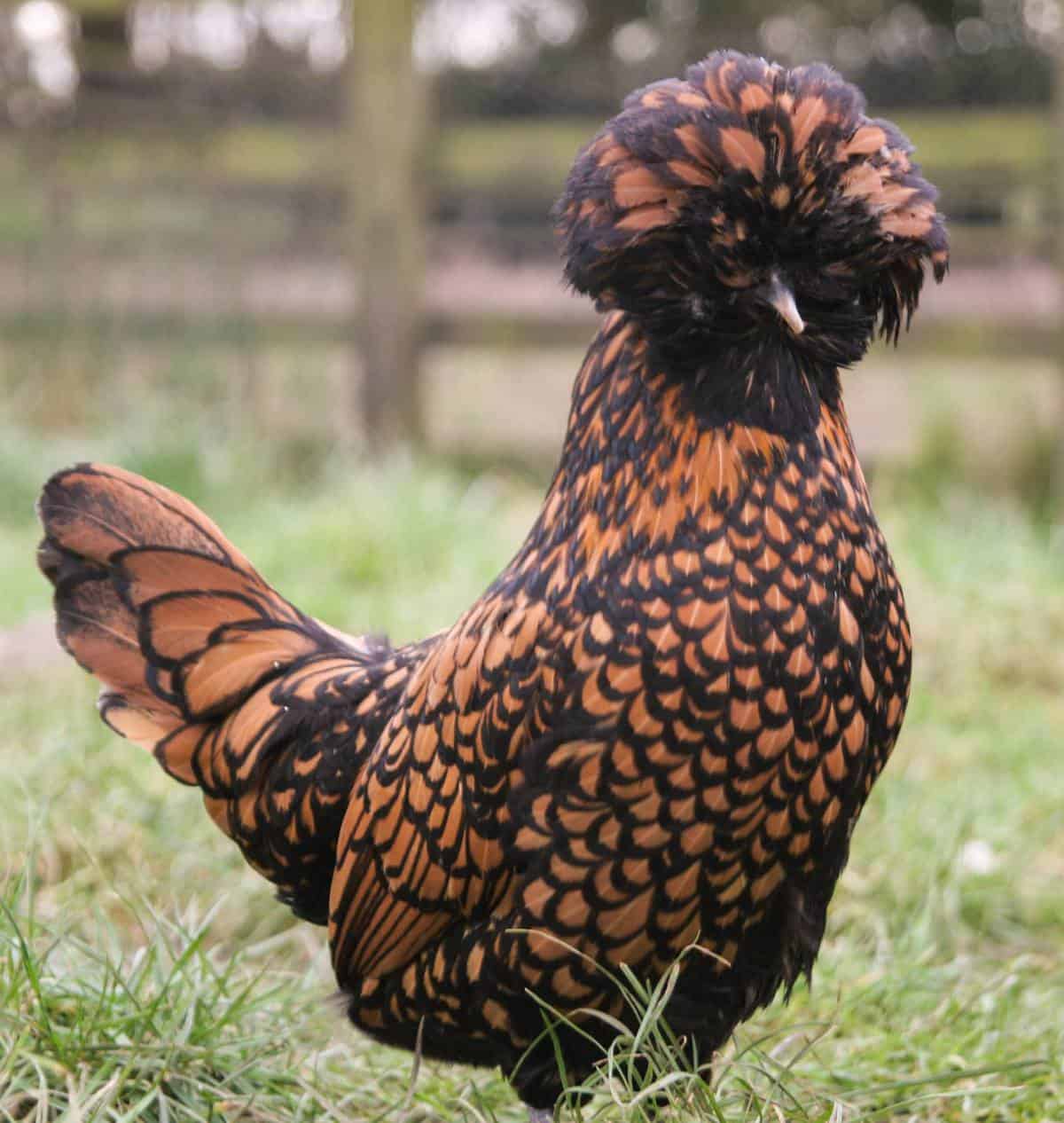
Let’s just say that if you’ve ever laid your eyes on a Polish chicken, chances are that you know for a fact that you weren’t dealing with any ordinary chicken. They immediately stand out from the crowd, thanks to their incredible colors and more importantly, because of their massive head size.
Their feathers usually fall over their face and eyes as well, which most often ends up obstructing their view. If you are lucky enough you can end up with a bearded Polish chicken as well, a much rarer, yet still absolutely gorgeous option.
They are actually considered to be medium-sized chickens, with longer bodies and broader shoulders. On top of that, they also have red wattles and combs, combined with their signature white ear lobes.
With all that being said though, we should also mention the fact that Polish chickens do tend to come in a variety of different colors, so depending on which one you got, you can end up with brown, black, white, silver or even blue feathered chickens.
Polish Chicken’s Personality
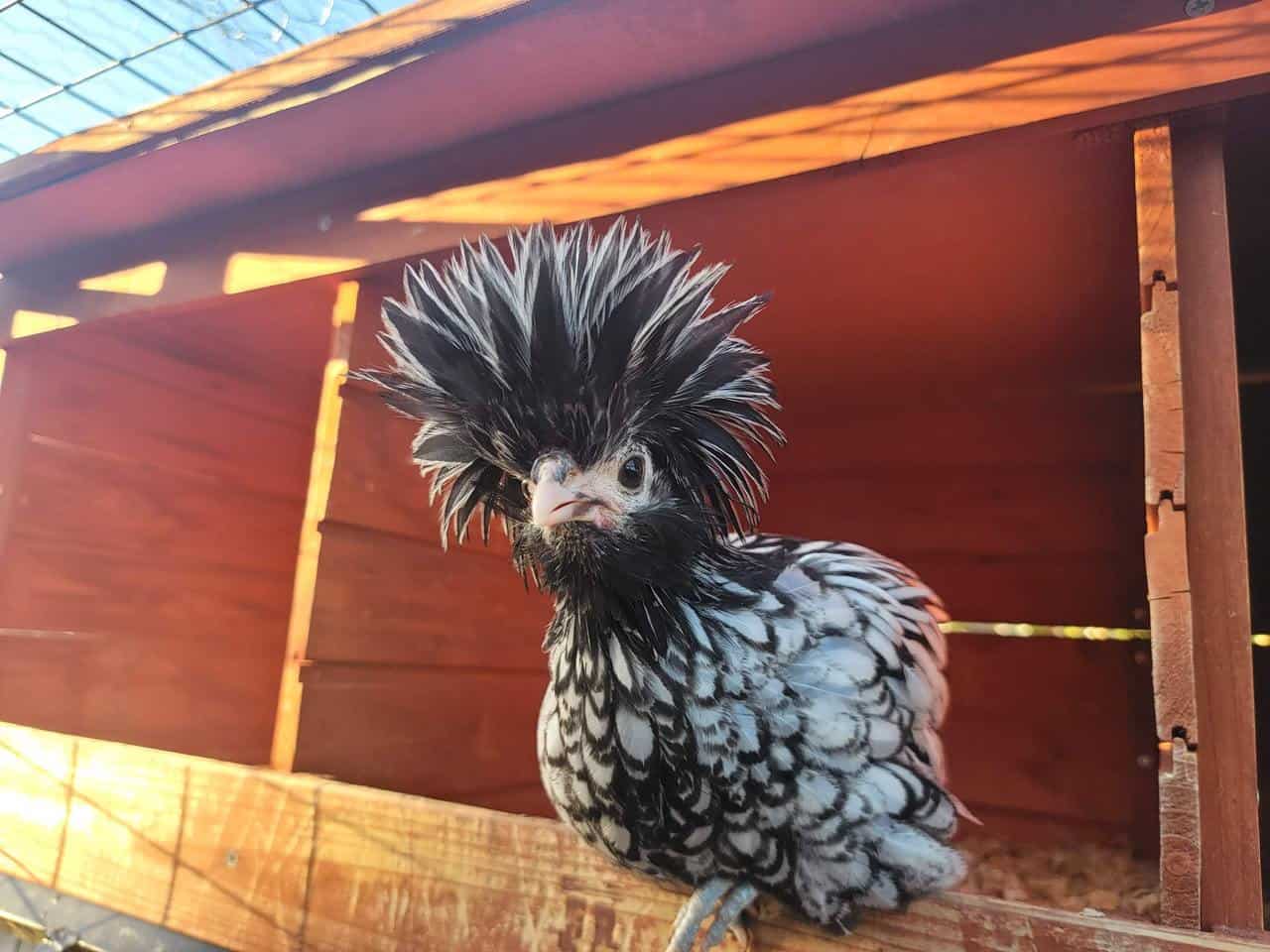
As far as their personality goes, there is a reason why Polish chicken are known to be one of the most popular chicken breeds out there. They are actually considered to be great as pets for young children as well, mostly because they are so friendly and playful.
The only real downside to them is definitely the fact that they can end up letting their curiosity get the best of them, which means that if they do see something that caught their eye, they can end up jumping on the counter or breaking stuff to get to it. They would probably love these chicken toys.
We also recommend that you make your presence known before you actually attempt to pick them up. This is due to their poor vision as they can be scared very easily, which can result in them starting to flap their wings violently, and even scratch away at any potential predators.
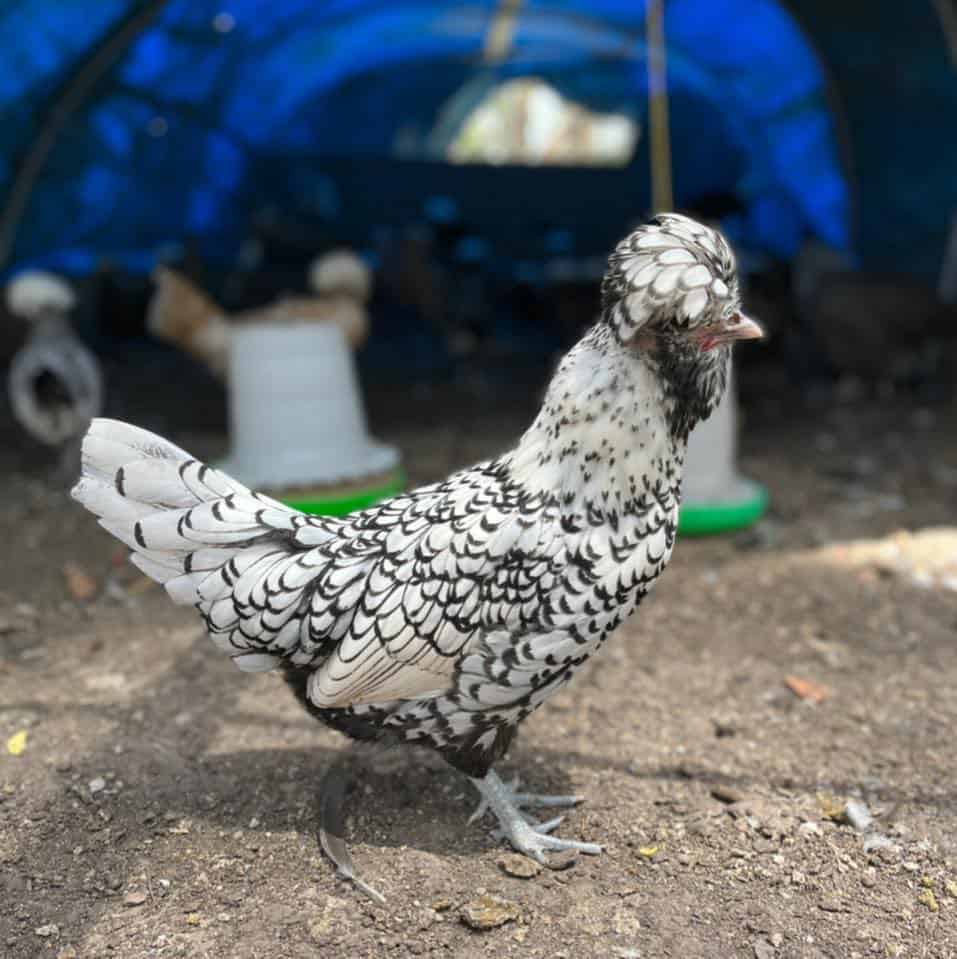
This is especially recommended for those that want to take care of a whole flock of Polish chicken, since if you start rattling them up, they can quickly become chaotic and calming them down is no easy feat.
As far as actual pecking issues go though, let’s just say that they are not exactly threatening, especially when compared to other, more dangerous breeds such as the Rhode Island Reds or any other angry little feathered demons.
They are also fairly good when it comes to taking care of themselves, just make sure to have enough hens per rooster, because you don’t want to end up with your rooster defeathering your hens too much while courting them.
But for the most part you shouldn’t worry all that much about them, as they are typically very docile creatures, and as mentioned previously, this makes them great pets for children and adults alike.
Egg Production
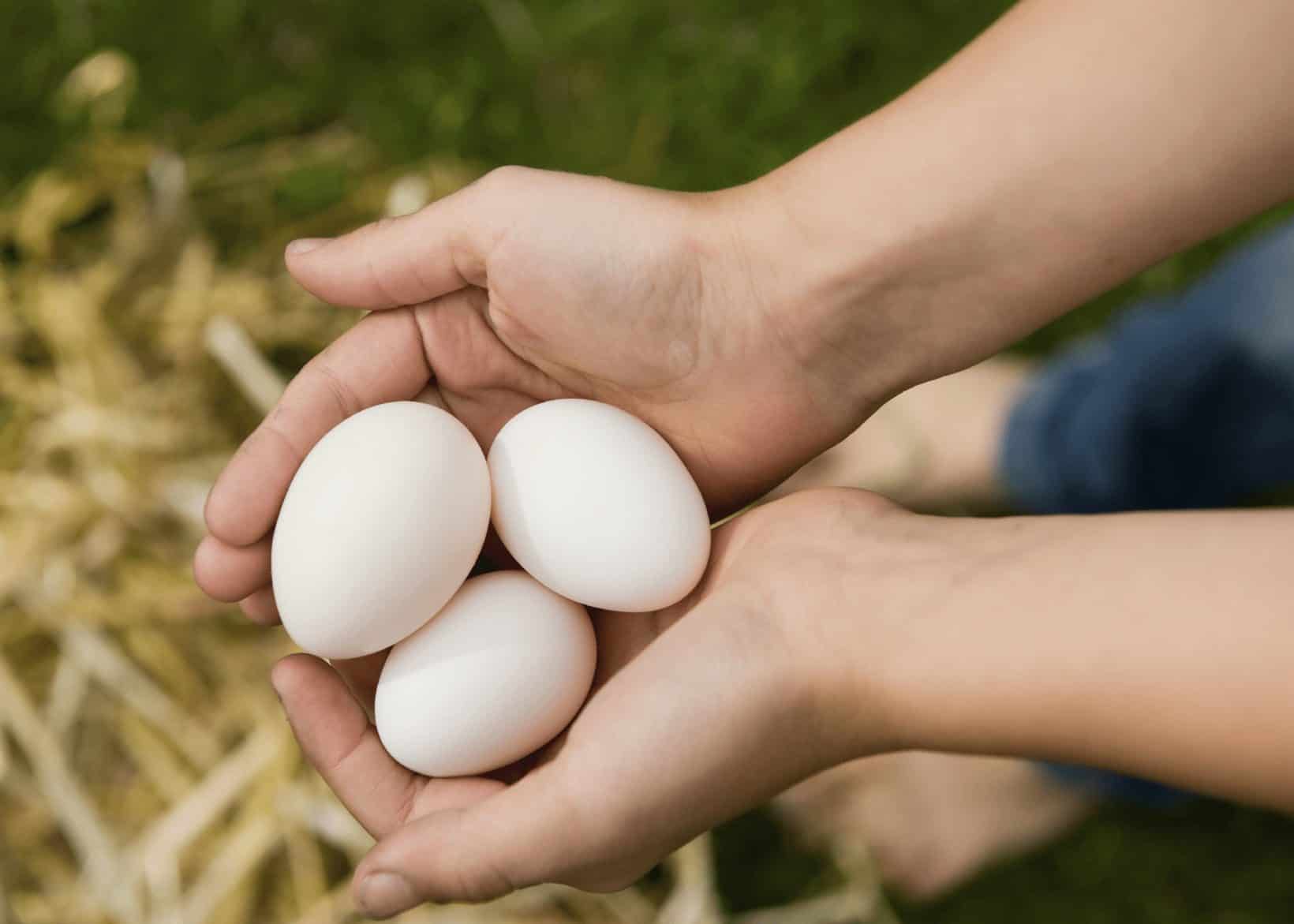
We mentioned previously how their rise to fame actually sprung up from the fact that they have a good egg layer, but on top of that they are also very productive, as they can have as many as 4 eggs every week, resulting in almost 200 per year or so.
Typically though, you should know by now that while they are very good when it comes to their egg production, they are still considered to be ornamental chickens, meaning that although they don’t produce the most eggs, these chickens can still make you a profit from local exhibitions or shows.
The actual quality of their eggs, and the egg capacity in itself that these chickens are capable of, is largely dependent on the strain of chicken that you currently have at your disposal.
They will usually start laying eggs around 20 weeks or so in, and as far as this breed is concerned, they only produce pure white eggs.
Noise Levels
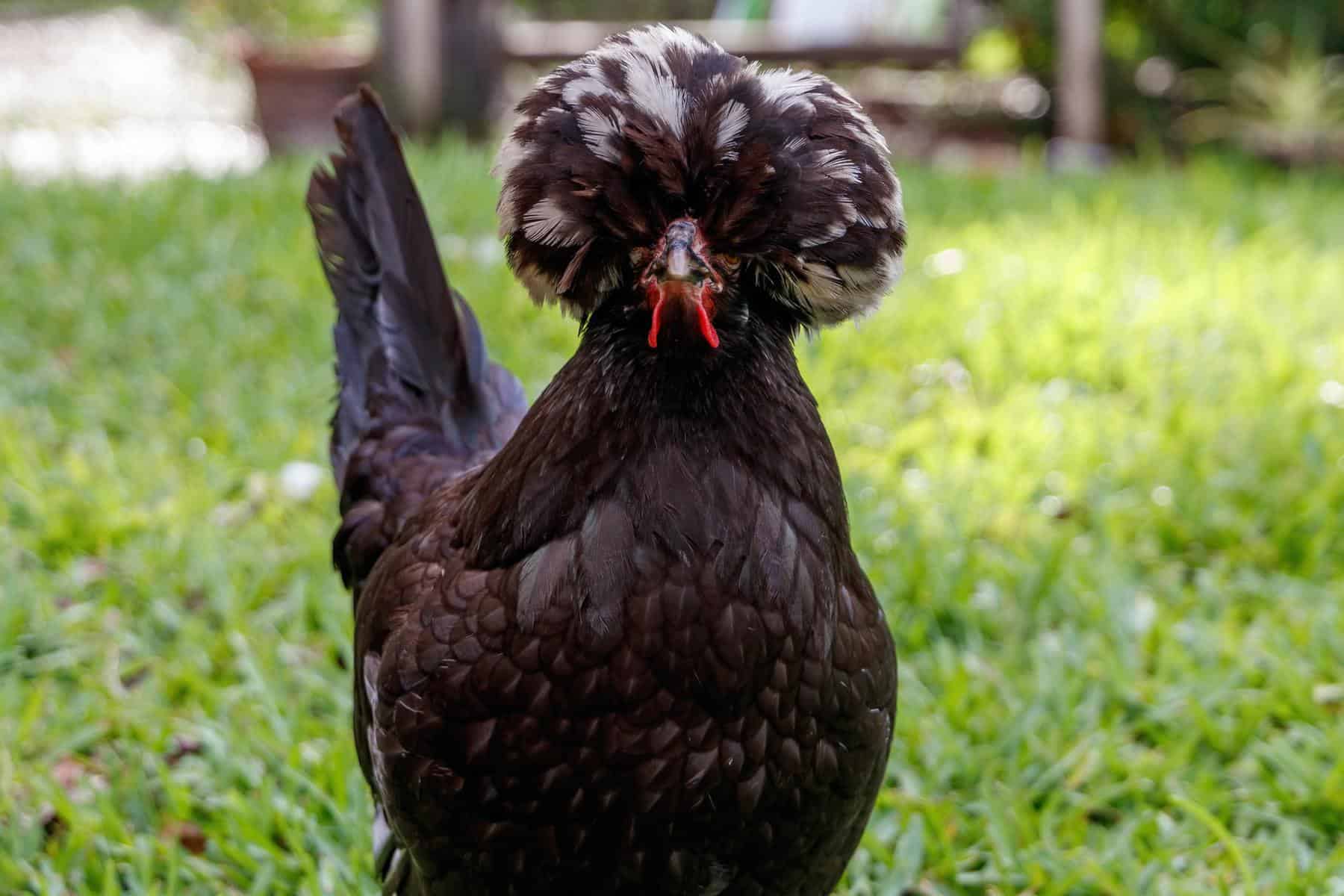
This is actually considered to be one of the best suburban chicken breeds out there, simply because they are rarely if ever vocal.
The only time that you will have to deal with them making noise is probably when they are cooing in the morning to wake you up, or when they are laying the eggs. Other than that, they are pretty much always silently waiting for you to come to them and give them head pats.
Feathering
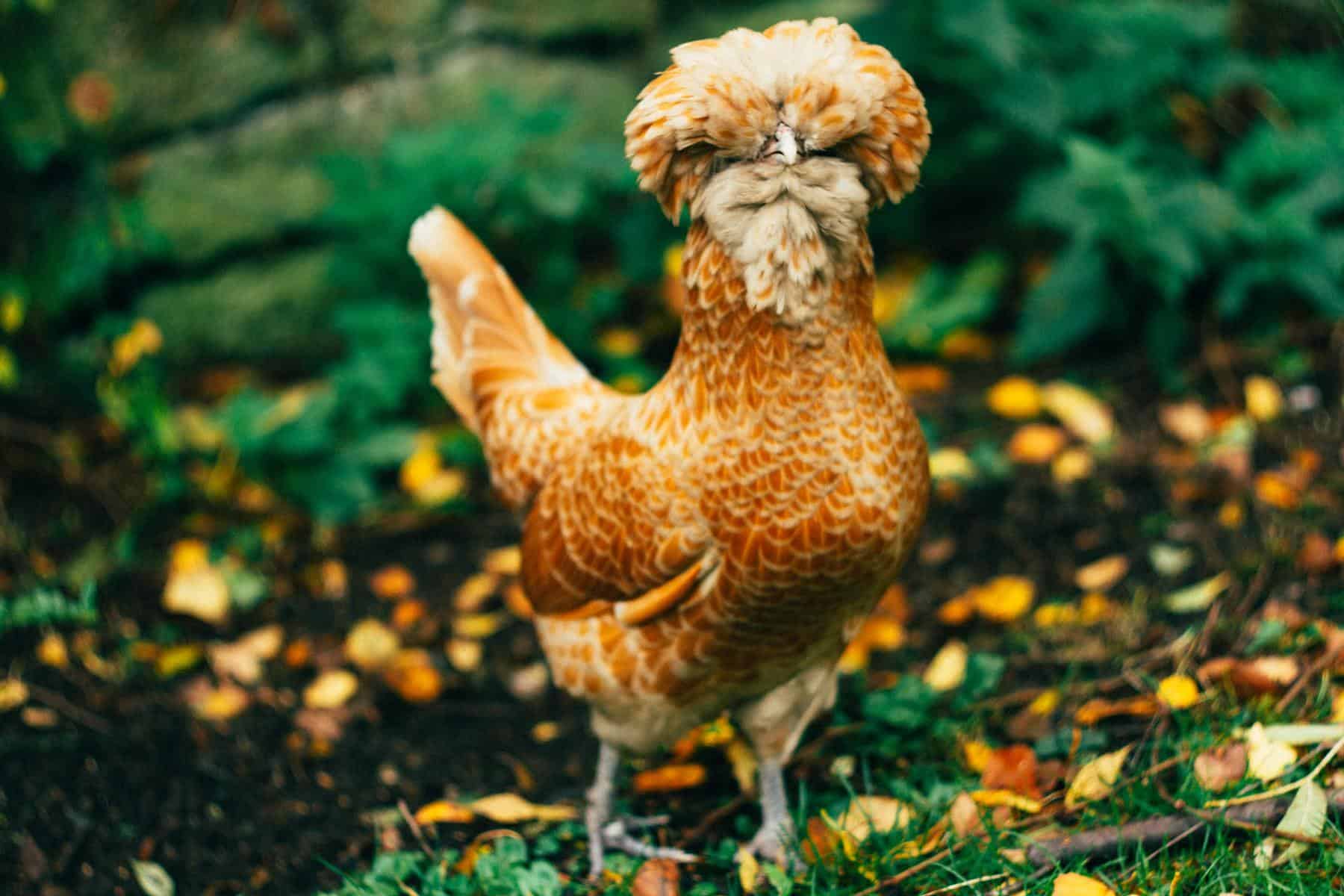
We did briefly skim over their look and more specifically, their fluffy feathers but we haven’t actually properly tackled the key factors that need to be kept in mind here.
First off, the feathers on their heads are what actually makes them look so different and so special to begin with. They are also referred to as the Elvis chickens, because of their signature “hairstyle”.
These crowns of theirs can actually grow as large as 3 inches in length, and they usually end up forming a massive crest on their heads, which falls over their eyes. They are also known as the Pom-pom chickens or sometimes even the Top Hat chickens.
Health Issues
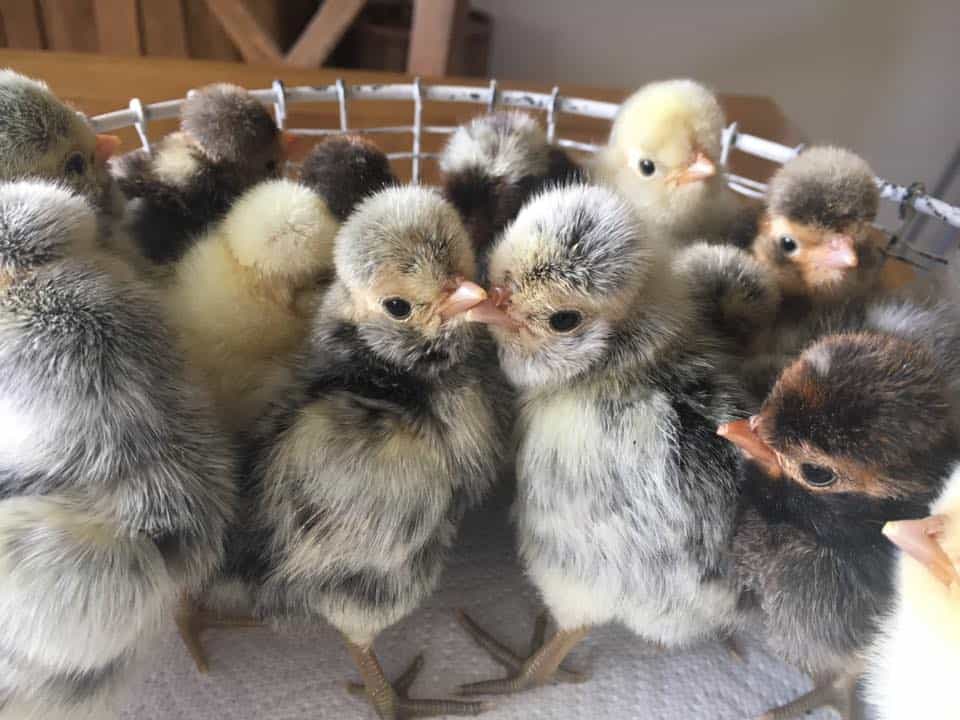
If you are looking to get yourself a Polish chicken you will need to keep in mind the fact that the first couple of weeks of their lives are by far their most important ones because of their bony head prominence. What this means for them is that they can easily be injured or even killed if they get pecked once in the wrong place, so always make sure to keep them out of harm’s way.
Their crests and beards can also get invested with lice or mites, so always make sure to check them out as you do your morning chores. On top of that you need to trim down the feathers, so they can actually see ahead of them, and not bump into everything.
But for the most part, outside of those first couple of weeks, you shouldn’t be too scared of owning a Polish chicken flock. They are generally healthy birds, with the same exceptions that can be common for most other chicken breeds out there.
Since they are considered to be ornamental birds though, we recommend that you take the time and really keep them looking as healthy as possible, to be able to show them off during a competition.
If you want to participate in one such competition, we recommend that you contact the Polish Breeders Club. They will inform you on everything else that you may need to know.
Feeding Tips
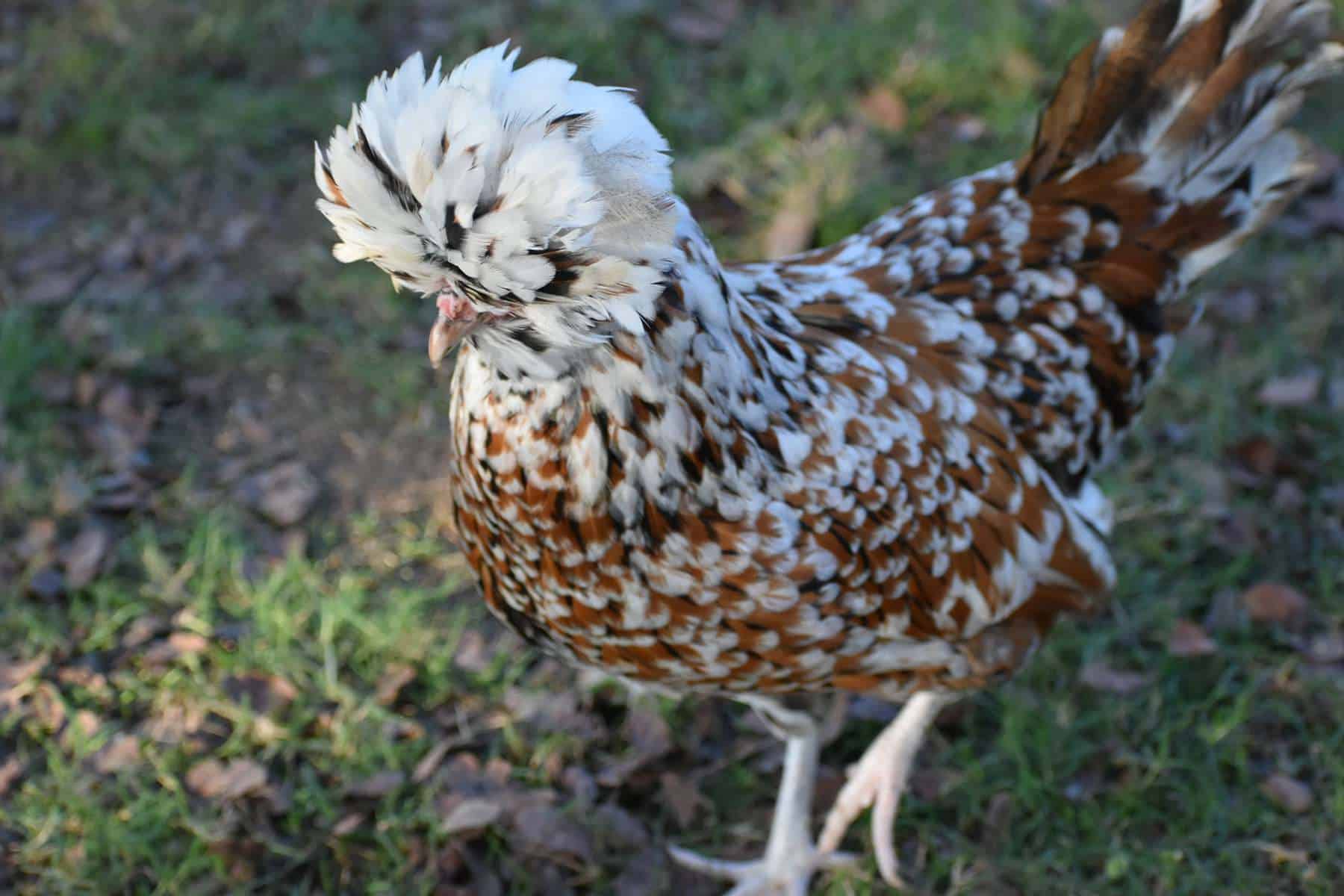
For the most part, you’ll want to go for around 16% protein for the Polish chickens in your coop during their laying season.
Do keep in mind however that during the molt you will need to increase that number to 20%, because that’s the only way to make sure that their feathers will regrow, and that they’ll be just as majestic as they were before.
You can choose between free feeding or setting up a strict feeding regime for them. Typically, if you are looking to actually show off your chicken during a competition, you will want to make their feeding less erratic but again, it all depends on what you personally prefer to do.
Coop Setup
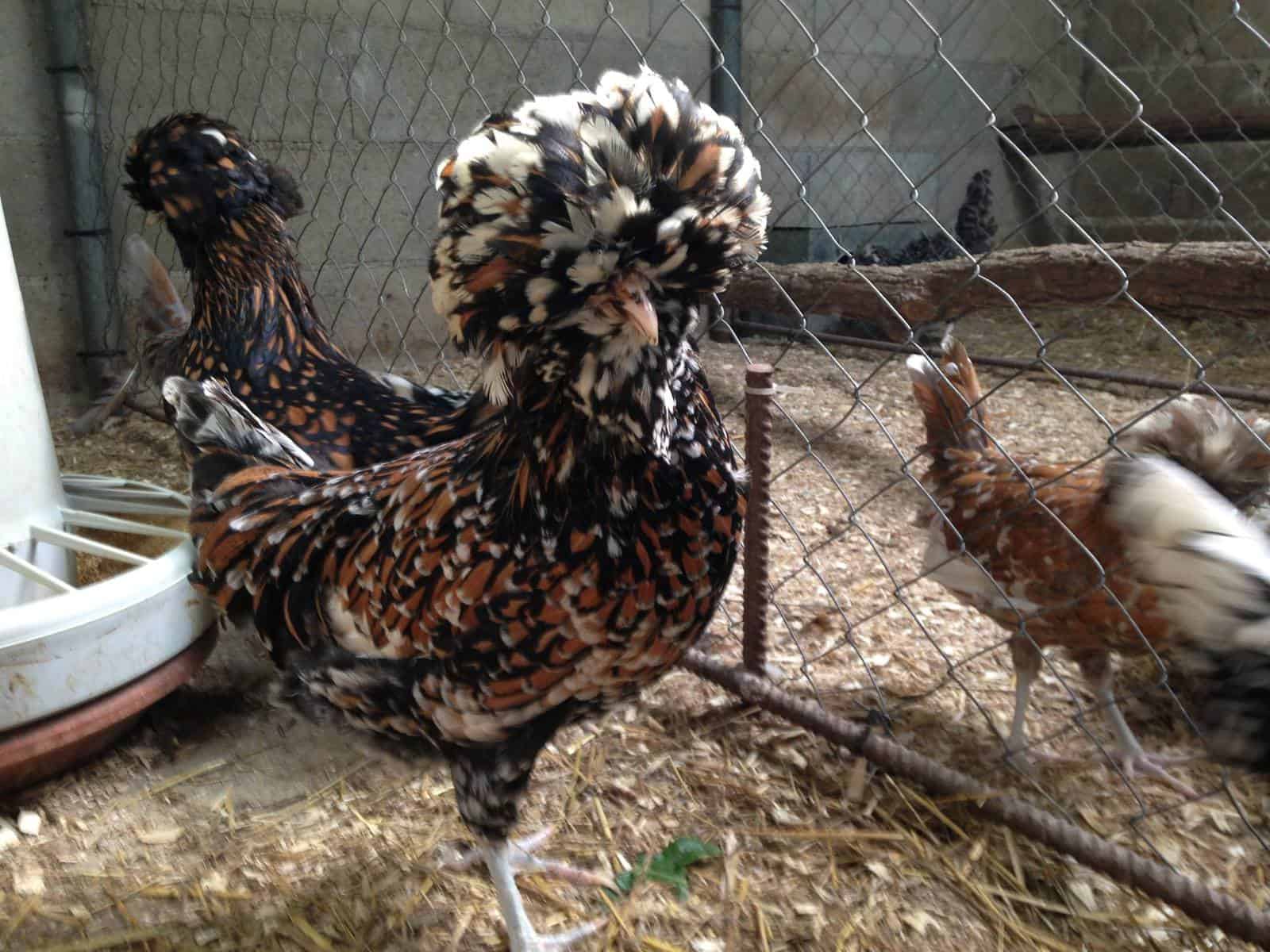
Despite the fact that Polish chicken are very similar to most other chicken breeds out there, they will require at least 4 square feet apart from each other especially during those first couple of weeks.
They are actually very energetic for the most part, and since their vision is impeded by their “haircut”, let’s just say that you want them to be able to actually move around a bit before they smack into a wall.
For the roosting space we recommend that you give them around 8 inches or so per bird. But during the summer heat you may want to increase that slightly, to make sure that they don’t get overheated.
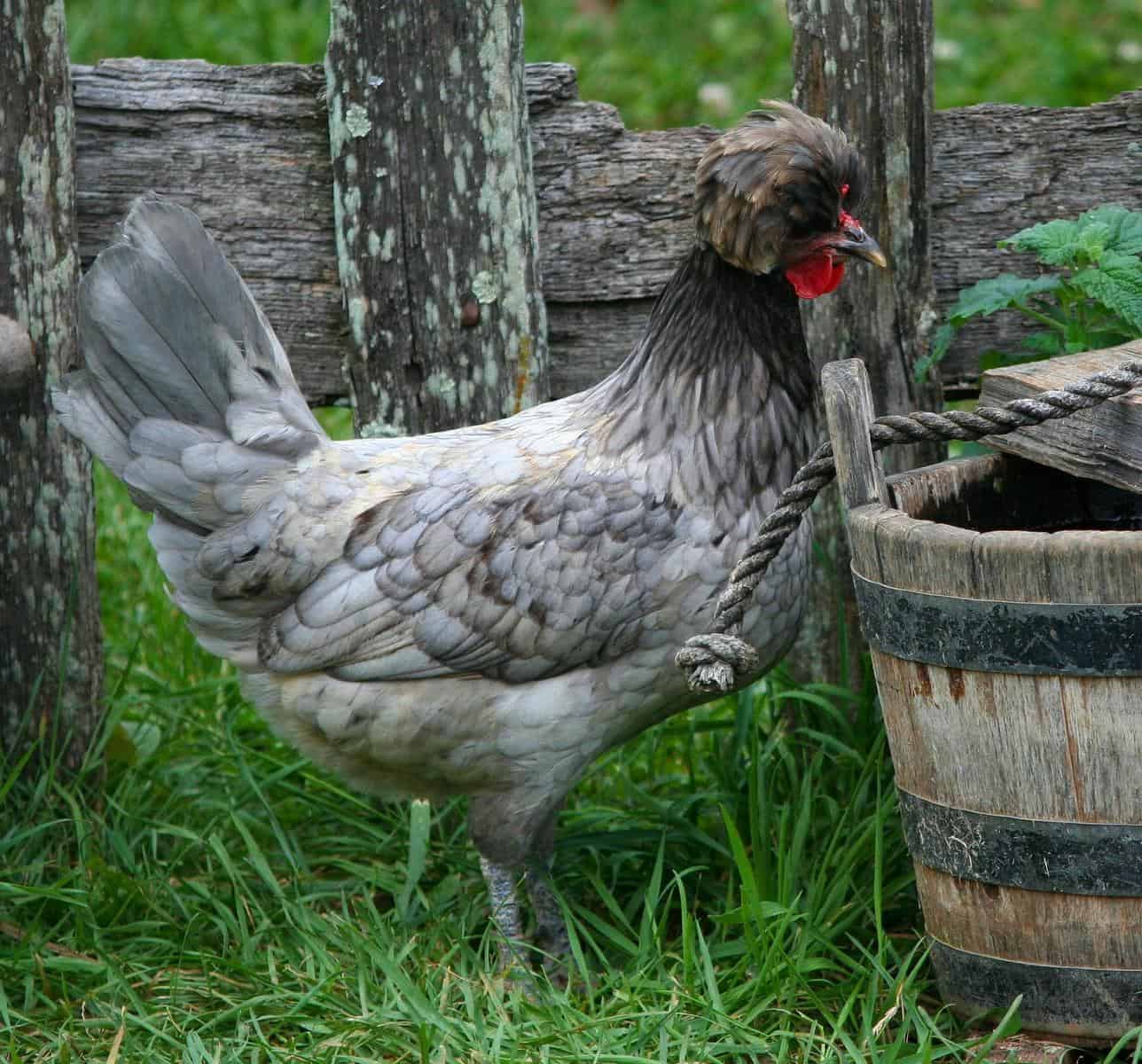
For their nesting box we recommend that you go with a simple 12 x 12-inch setup. A single nesting box can also house up to three different chickens, but we highly recommend that you have more than enough ready so as to not have them overcrowd one another.
A lot of owners have also stated that keeping them more restrained is a lot better for their general health simply because they tend to not run into walls as much, but this again depends on the chicken you have and what you want to prioritize.
We personally believe that the chicken should be able to run around freely as much as possible, but there are definitely cases in which you should confine them a bit more just for their own health’s sake.
Fun Facts About Polish Chicken
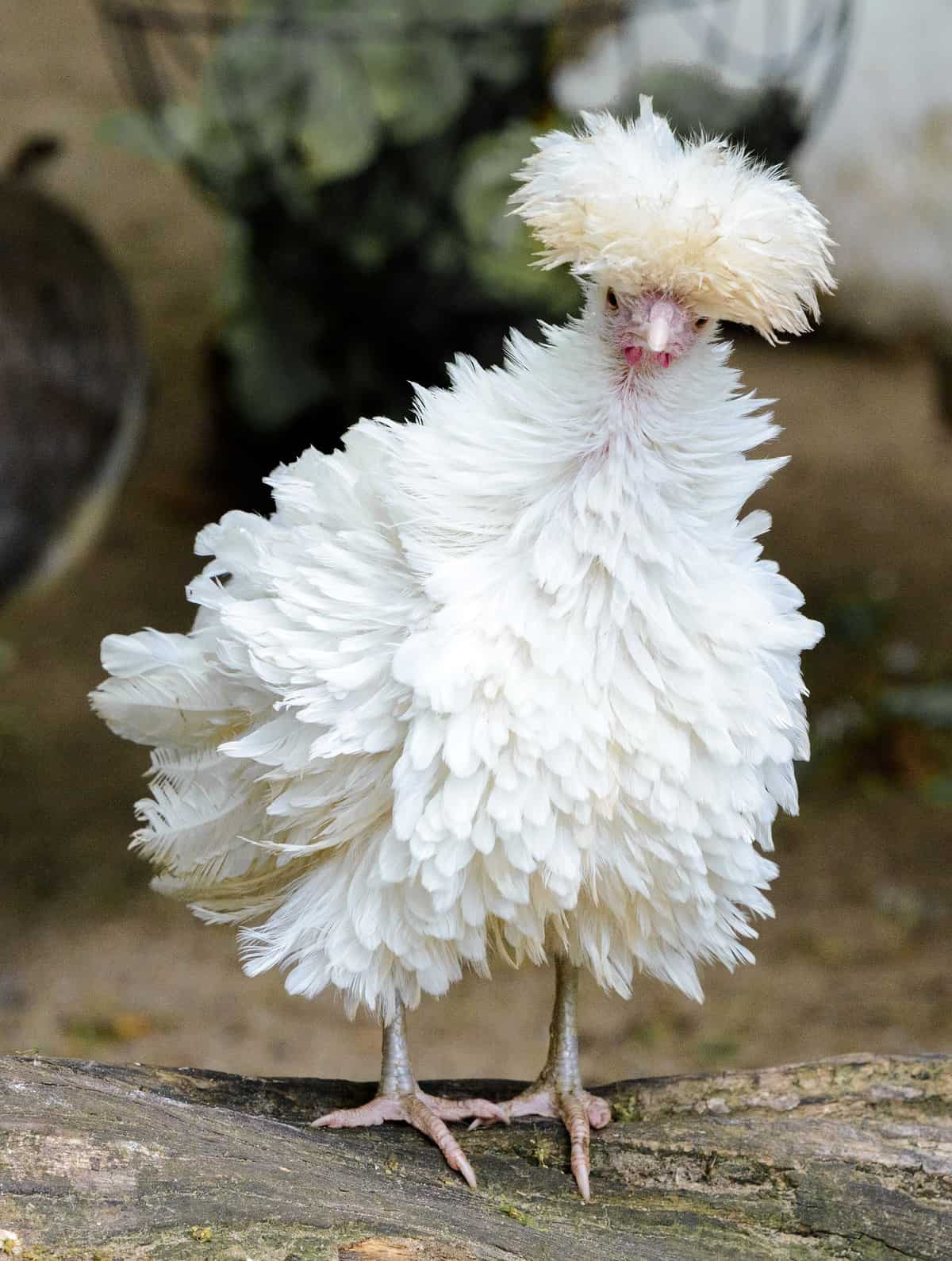
In case you didn’t know by now Polish chickens used to be considered a part of the French aristocracy, thanks to their flamboyant and downright regal appearance. We did mention how one of the theories of their origin is related to the king of Poland’s retreat to France, which is why this shouldn’t come off as a surprise.
On top of that, another interesting fact about Polish chicken that we know of, is the fact that they tend to have an unusual skull, which thrusts upwards towards the top of their head. This actually creates that aforementioned bony appearance on their crest and it is why they actually have one of the largest brains in the chicken kingdom.
But it isn’t all sunshine and rainbows for them, as this unusual shape of the head is also the main reason as to why they are so easily injured, or even killed during their first couple of weeks. Their brains are so massive that they actually protrude through the skull, leading to them actually getting hurt by the simplest of nudges.
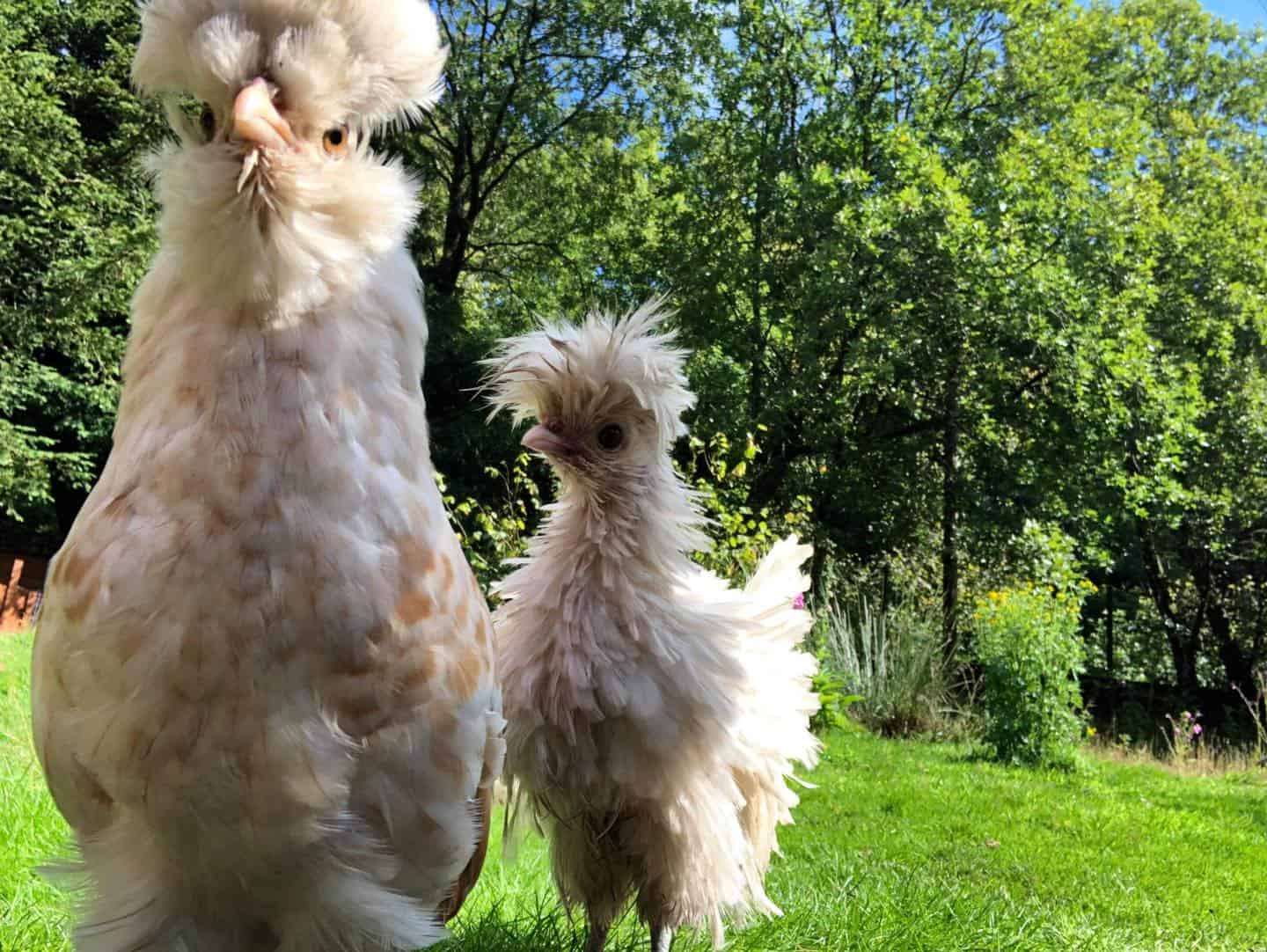
This is why you need to keep taking care of them throughout those first couple of weeks. Although they were never really deemed endangered, they are still on a constant watch list because of this handicap of theirs.
There are currently less than 5,000 of them in the US, and in total it is said that the number only gets up to 10,000 or so. That is the sad reality of their “special” look but for all that it’s worth, it may very well also be the only reason why they are around these days.
It’s not at all shocking to hear the fact that Polish chicken are very popular at showoffs, largely due to their crests and the massive crowns that cover their eyes. So, in a very strange way, it is a sort of a double-edged sword for the most part.
Conclusion
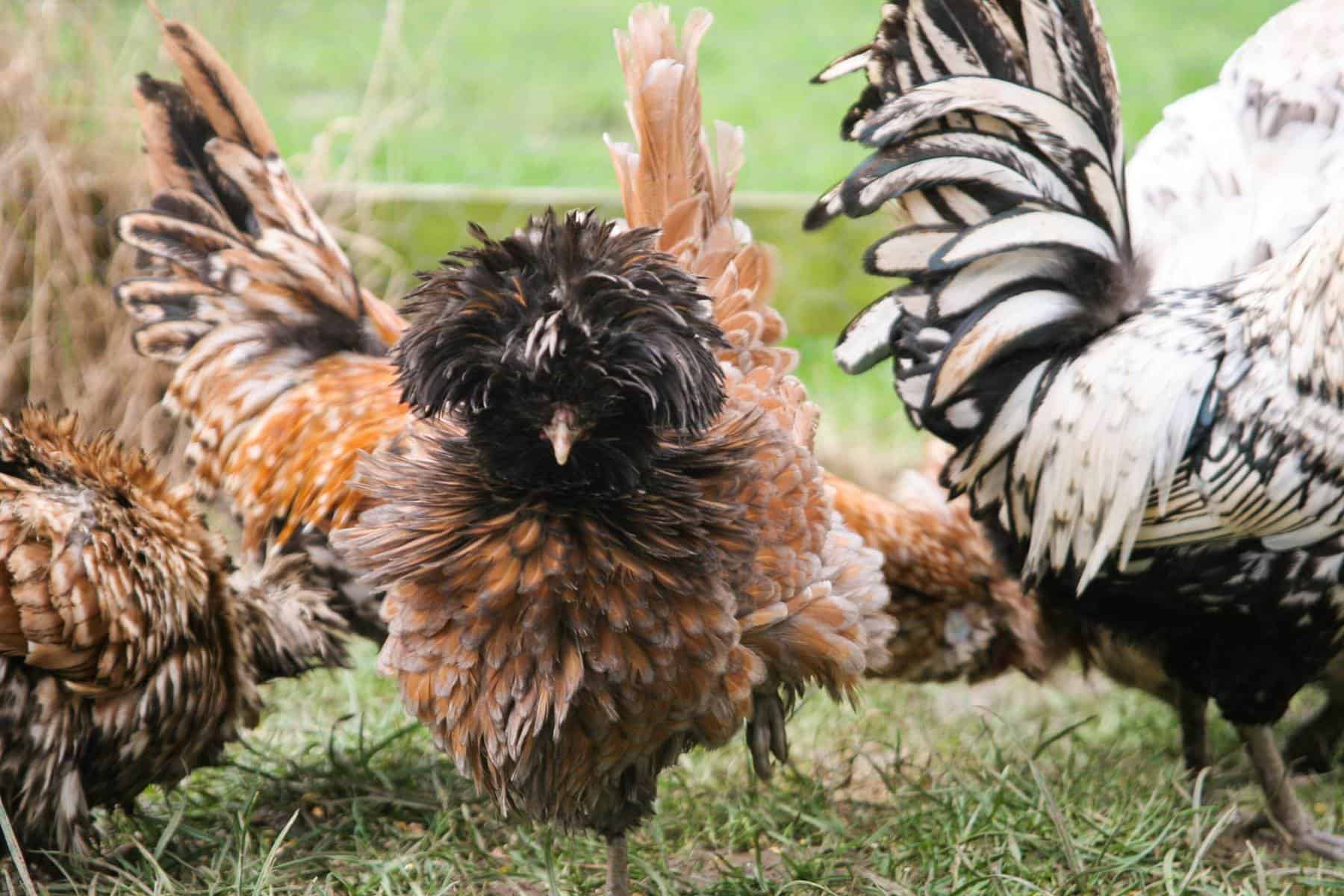
So, despite this obvious problem, should you get your hands on a Polish chicken? Honestly, if you like the way they look then there’s no reason as to why you should avoid them.
They are a bit more demanding during those first couple of weeks, but they make for great egg layers, their cooing is always really nice to hear, and they are docile creatures that can be kept even around children, without a care in the world.
Essentially, it all comes down to your personal preference. Their price also varies quite a bit depending on where you live, but for the most part they shouldn’t be all that much more expensive than the typical chicken breed.
If anything, they’ll be a bit harder to find because of their almost-endangered status, but once you do find a breeder you should be able to come down to an agreement in no time.

